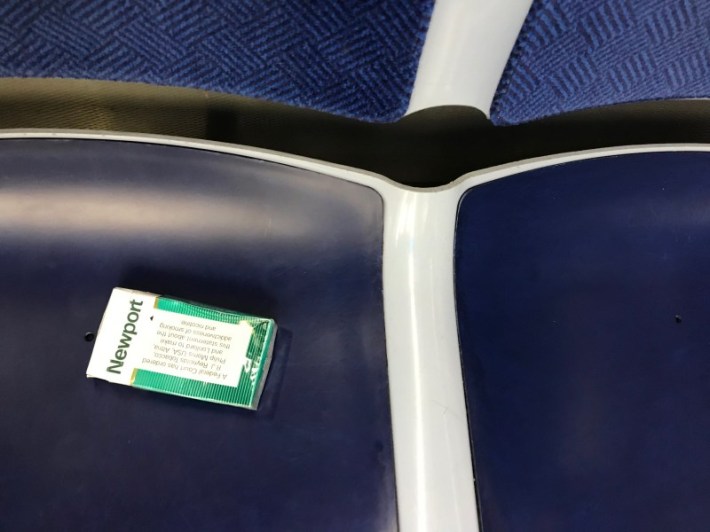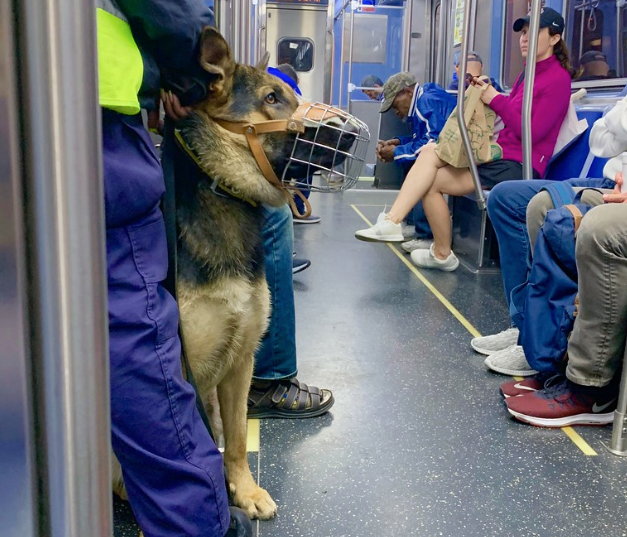Crain's Chicago political columnist Greg Hinz made some valid points in yesterday's column about current conditions on the CTA, and the need for improvement if local transit ridership is ever going to return to pre-pandemic levels.
Hinz is a transit fan, but he argues that the system, especially the 'L', is "a big, crashing mess at the moment, with the tubes filthy and stained with graffiti, elevators and escalators out of operation, cars converted into rolling homeless shelters, rules about eating and smoking seemingly forgotten, and police presence all but invisible." He asserts that people aren't going to return to riding buses and train when workplaces reopen if the CTA is "dirty, dark and scary."
The columnist complains of seeing dozens of people smoking tobacco and pot, and numerous folks sleeping across multiple seats with large amounts of possessions with them. "They have my sympathy, but you just can’t live on the CTA," he writes. He says he's seen public urination inside a rail car, and there's always at least one person onboard who's not wearing a mask. Hinz, who says he regularly commute home at night, also reports generally unclean conditions in stations and on the vehicles.
My experience riding trains during the pandemic, mostly on the Red Line, aligns with much of what Hinz describes. Even before COVID-19, decreased ridership on the CTA due to the rise of Uber and Lyft seemed to correlate with less compliance with important rules against smoking and littering on trains, and the number of people seeking shelter in rail cars seemed to be increasing.
With the 80 percent decrease in CTA ridership early in the pandemic, meaning fewer eyes-in-the-cars, problematic behavior seems to be on the increase. And, while no one would choose to sleep on the 'L', rising unemployment during the pandemic means more Chicagoans have no alternative.
During my last few months of riding the 'L', mask wearing levels have been OK, but in every half-full car there are usually at least one or two people who are barefaced because they're eating or talking on the phone. And smoking in cars is, in fact, widespread -- it's been common for me to have to switch carriages once or twice during a trip before finding one with clean air. I even had someone ask me for a light on a train once.

With fewer public venues open, people seem to be using trains as a place to party, and it's common to see a group of young people at one end of a car sitting on top of the benches with their feet on the seats, often smoking and/or drinking. On one occasion a teen walking through a car randomly slapped the back of my head and cursed at me. On the way home, a person stood in my carriage and urinated onto the 95th Street platform, also getting plenty of urine on the car floor and delaying the train. Hinz is obviously right that many people who have the option of driving or taking ride-hail aren't going to put up with these conditions.
But there were also some issues with the Crain's piece. Former Streetsblog reporter Lynda Lopez, now with the Active Transportation Alliance, argued on Twitter that it was inappropriate for Hinz to run photographs of sleeping homeless people he snapped on trains.
What an awful piece posting photos of unhoused residents sleeping on the train. It feels dehumanizing and meant to demean their circumstances, rather than call for compassion. https://t.co/MHH5ptE6HH
— Lynda Lopez (@Lyndab08) March 12, 2021
It's true that many CTA customers aren’t interested in sharing a car with multiple riders who haven’t had the opportunity to bathe or change clothes in a long time, and sleeping across seats is against CTA rules. But people sheltering on transit is ultimately a symptom of failed public policy on housing, mental health, and other issues. Local nonprofits are already partnering with the city of Chicago to do outreach to homeless people on the 'L', offering food and supplies, healthcare, and referrals to shelters, clinics, and other services. Funding more outreach on trains would be an excellent use of COVID stimulus money.
Hinz also complains about an apparent lack of police presence in the system during the coronavirus crisis, and he quotes a rep from the local transit operators union as saying that more more security personnel are needed. On the other hand, a heavy police presence on transit doesn't make everyone feel safer, especially those who are more likely to experience racial profiling.
And on February, 28, 2020, the very day Mayor Lori Lightfoot announced an increased police presence on the CTA in response to a spike in crime, officers shot and critically wounded Ariel Roman, 33, after trying to detain him for walking between ‘L’ cars. There was another police-involved shooting on the South Shore Line last week, albeit under much more justifiable circumstances.

Streetsblog Chicago has previously floated the idea of bringing back unarmed CTA conductors as a strategy to help deter crime and encourage rule compliance on trains, with less potential for situations escalating to violence.
So Hinz makes some good arguments about the need to improve safety and rider experience on the CTA if we're going to avoid a dangerous post-COVID spike in driving. But shaming people for being homeless and saturating the system with cops aren't the best ways ways to achieve that goal.





